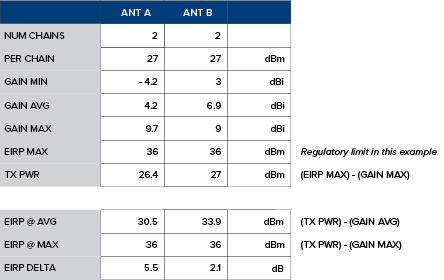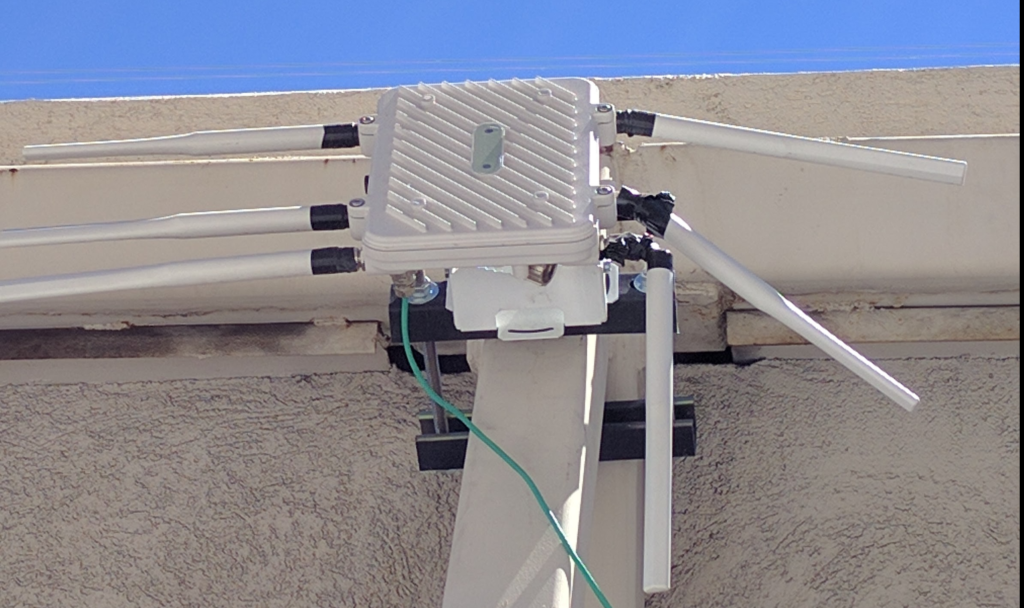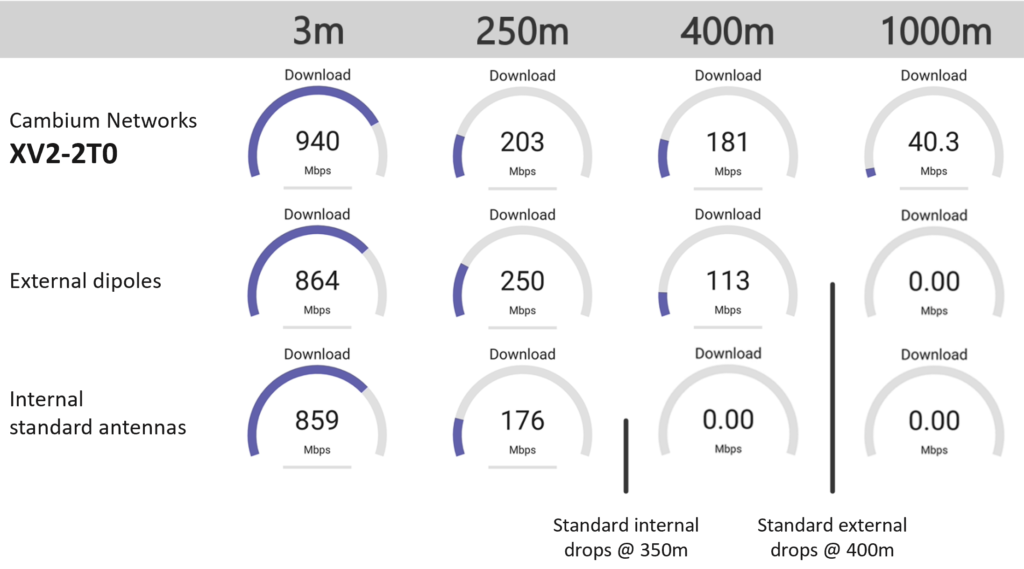Since its introduction in 2018 and final certification in February 2021, a great deal has been written about 802.11ax (herein referred to as Wi-Fi 6) and its key features. The headline feature of Wi-Fi 6 is orthogonal frequency-division multiple access (OFDMA). This technology comes from the cellular world, thus the frequent conflation of Wi-Fi 6 with 5G, and delivers a deterministic network where the access point controls when and how a client device will transmit. For good reason, the IEEE calls 802.11ax the “High-Efficiency standard.” If OFDMA was the only new technology in Wi-Fi 6, we could be satisfied with that. Fortunately, the IEEE went beyond OFDMA and created additional modes that all contribute to a more efficient network. For example, the upstream OFDMA and MU-MIMO decrease latency and increase capacity for high-density networks and latency-sensitive applications like AR and VR. Target Wait Time (TWT) allows a client device to power down for longer periods of time (measured in fractions of a second up to minutes), increasing battery life and decreasing unnecessary RF management overhead, even for a smartphone streaming an online movie.
Placing the Focus on Efficiency for Outdoor Wi-Fi
For outdoor Wi-Fi networks, Wi-Fi 6 continues the focus on efficiency. Consider the impact of narrowband interference in an outdoor network with devices that are closer to the AP and devices that are farther away. The nearby device can easily mask the packet arriving from a farther client if each are using the same subcarrier frequency. Thus, Wi-Fi 6 introduces dual subcarrier modulation (DCM) that takes the same payload and applies it to two unique frequency subcarriers. The receiver will receive both subcarriers and decode the duplicate payload. DCM provides payload diversity to ensure reliable payload delivery but at a cost of half the bitrate. Thus, DCM is only used when the distance between the devices is increased, and the likelihood of errors caused by interference increases. DCM is well paired with the Wi-Fi 6 preamble power boost of 3 dB to ensure that communications are maintained at longer distances while payload is duplicated for reliable transmission. Adding to the signal robustness created by payload duplication, a longer guard interval up to 3.2 µs allows longer operating links additional time to receive the transmissions and any signal reflections.
Effective Radio Frequency Use: Greater Density, Speeds and Reliability
More efficient use of the RF spectrum translates into higher density networks, at higher speeds, with greater reliability. Altogether, a Wi-Fi 6 network can be 25% to 200% faster in aggregate network speed using the same RF spectrum as the previous generation.
With this great new protocol delivering efficiency at the RF and upper layers, we need to pair it with a high-efficiency antenna to realize all the benefits. The engineering definition of antenna efficiency is quite simple: radiated energy output / energy input. For an omni-directional antenna, we can see this efficiency by analyzing the average gain and the delta between the average and peak gain. Peak gain is not the result of a high-efficiency antenna design because peak gain is measured by as little as one spike in the pattern. Let’s consider an example of how this can be detrimental.
A Comparison: A High-Efficiency Antenna System Suited for Wi-Fi 6
Let’s compare two antenna systems using measured values for the minimum, average and maximum antenna gain. A key starting point is to subtract the peak gain (max) from the maximum allowed EIRP to arrive at the maximum conducted transmit power. Then, add back the minimum and average gain to see what the effective EIRP will be in the antenna nulls and other points around the AP. At the bottom of the chart, note that the antenna B delta between AVG-MAX is 2.1 dB vs. the antenna A delta of 5.5 dB. In the logarithmic dB scale, that’s a difference of over twice the power.

In all antenna design, there are tradeoffs to meet other objectives. Additionally, there are directional antenna systems where back lobe nulls are highly desirable and a product of good design. So, the example above is just one aspect of a particular antenna design for an omni-directional antenna where the objective is consistent coverage in 360 degrees around the AP. In this example, maintaining a high average gain and a low delta between the average and peak gain delivers a high-efficiency antenna system that pairs well with Wi-Fi 6.
XV2-2T Outdoor Wi-Fi 6 Access Point: High Efficiency, Greater Range
The Cambium Networks XV2-2T0 outdoor Wi-Fi 6 access point has a purposely designed high-efficiency antenna. The design includes low-loss dielectric material used for the 5 GHz radiating elements to improve efficiency and increase gain. Antenna-radiating elements are built from five stacked dipoles separated from the electronics for high average gain across all 360 degrees. Dual slant polarization is aligned to mobile devices that are the dominant client devices for outdoor Wi-Fi.

The XV2-2T0 was tested against two other antenna designs common in the industry. The first was external dipole “sticks.” External dipole stick antennas perform very well and have some characteristics that we have already discussed. External dipole antennas are separated from the electronics and access point ground plane and are often designed in a stacked dipole configuration. External antennas require extra effort to ensure that antennas are properly installed and weather sealed. Note this image of an outdoor access point where the antennas suffered a catastrophic mechanical failure.
The other antenna design compared was an internal antenna where the radiating antenna elements are near the access point electronics. This design often trades efficiency to achieve a smaller-sized access point. Internal antennas cannot be removed, tampered with or suffer from deployment issues that can be associated with external antennas. Each of these designs have their own advantages, and Cambium Networks offers products in each of these categories, so we are not here saying one is always better than the other. For the Wi-Fi 6 outdoor access point, we chose to leverage the benefits of the external antenna and internal antenna into one unit. Here are some results. When testing at 3 meters from the access point, all three access points generated high throughput, as expected. The range was 859 Mbps to 940 Mbps. All in all, they were pretty close. The access point with an internal antenna and radiating elements near the electronics reached 350 meters at a speed of 120 Mbps. At the same distance, the Cambium Networks XV2-2T0 was 228 Mbps – 90% faster. The access point with the external stick antennas reached 400 meters at a speed of 118 Mbps. At the same distance, the Cambium Networks XV2-2T0 was 181 Mbps – 60% faster. The Cambium Networks XV2-2T0 reached out to 1,000 meters and might have gone a bit further, but we ran out of road. At 1,000 meters, the XV2-2T0 delivered 40.3 Mbps.

Extreme Performance for a Better User Experience
It must be said clearly: we are not promoting that an outdoor Wi-Fi network can be designed to deliver connectivity up to 1,000 meters. When architecting the outdoor Wi-Fi network, there are many other factors to consider such as the type of client (we used a Samsung S10e), the typical applications running, the number of clients connected, nearby RF interfering transmitters and other obstacles like buildings, trees and people. The extreme performance of the outdoor Wi-Fi 6 XV2-2T0 will deliver higher SNR to its connected clients while reducing coverage gaps and weak spots. Overall, when a proper wireless cell is designed, the XV2-2T0 will deliver a better user experience and give you those extra few meters of coverage where you might otherwise need to purchase a supplementary access point.
